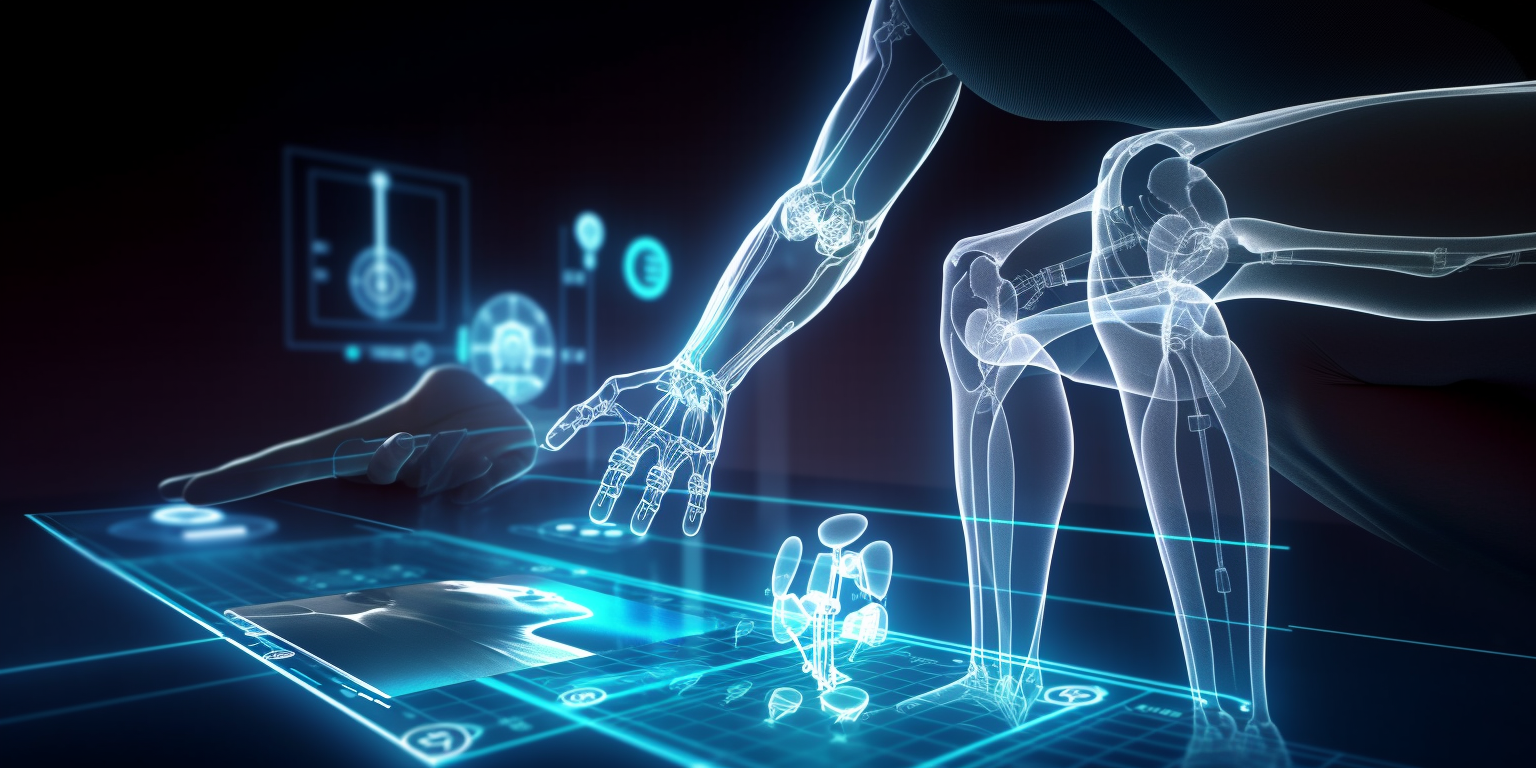Sports medicine has come a long way in recent years, thanks in part to advancements in technology. From injury prevention to rehabilitation, biomechanics to wearable tech, there are a variety of tools and techniques available to help athletes stay healthy and perform at their best.
One area where technology has made a big impact is in injury prevention. Biomechanics, the study of how the body moves, has helped researchers identify risk factors for common sports injuries. By analyzing an athlete’s movements, they can pinpoint areas of weakness or imbalance that could lead to injury. This information can then be used to develop personalized training programs that address these issues and reduce the risk of injury.
Wearable tech has also become increasingly popular in sports medicine. Devices like fitness trackers and smartwatches can monitor an athlete’s heart rate, sleep patterns, and activity levels, providing valuable data that can be used to optimize training and recovery. Some wearable tech even includes sensors that can track an athlete’s movements and provide real-time feedback on their form, helping them avoid injury and improve their performance.
When it comes to rehabilitation, technology has also played a key role. Physical therapists can use virtual reality to help patients regain strength and mobility after an injury. By immersing patients in a virtual environment, therapists can create a safe and controlled space for them to practice movements and exercises without the risk of further injury.
Overall, the intersection of sports medicine and technology has led to some exciting advancements in injury prevention and rehabilitation. By leveraging the latest tools and techniques, athletes can stay healthy and perform at their best, both on and off the field.
Benefits of Sports Medicine Tech
Sports medicine has come a long way in recent years, thanks in large part to advancements in technology. From injury prevention to rehabilitation, biomechanics to wearable tech, sports medicine tech is changing the game for athletes of all levels.
One of the most exciting areas of sports medicine tech is injury prevention. Biomechanics, the study of how the body moves, has become a key tool in preventing injuries before they happen. By analyzing an athlete’s movements, sports medicine professionals can identify potential problem areas and work with the athlete to correct them before they lead to injury.
Wearable tech is also playing a big role in injury prevention. Devices like smartwatches and fitness trackers can monitor an athlete’s heart rate, sleep patterns, and other key metrics to help them stay healthy and avoid overtraining. And specialized wearable tech, like compression sleeves and braces, can provide targeted support to help prevent injuries to specific areas of the body.
When injuries do occur, sports medicine tech is also making a big difference in rehabilitation. Advanced imaging techniques like MRI and CT scans can help doctors diagnose injuries more accurately and develop more effective treatment plans. And new technologies like virtual reality and robotic exoskeletons are helping athletes recover from injuries faster and more effectively than ever before.
Overall, the benefits of sports medicine tech are clear. By using the latest tools and techniques, sports medicine professionals can help athletes stay healthy, prevent injuries, and recover more quickly when injuries do occur. Whether you’re a professional athlete or just someone who enjoys staying active, sports medicine tech is changing the game for everyone.
Injury Prevention Techniques
One area where technology has made a significant impact is in injury prevention and rehabilitation. By using biomechanics and wearable tech, sports medicine professionals are able to identify potential injuries before they occur and develop personalized rehabilitation plans for athletes.
Biomechanics is the study of how the body moves and the forces that act upon it. By analyzing an athlete’s movements, sports medicine professionals can identify areas of weakness or imbalance that could lead to injury. They can then develop targeted exercises and training programs to address these issues and prevent injury.
Wearable tech, such as fitness trackers and smartwatches, can also play a role in injury prevention. These devices can track an athlete’s movements and provide real-time feedback on their performance. This can help athletes make adjustments to their technique and form to reduce the risk of injury.
In addition to injury prevention, technology is also being used to improve rehabilitation. For example, virtual reality technology can be used to simulate real-life scenarios and help athletes regain confidence and strength after an injury. Wearable tech can also be used to monitor an athlete’s progress during rehabilitation and adjust their program as needed.
Overall, the combination of sports medicine and technology has led to significant advancements in injury prevention and rehabilitation. By using biomechanics and wearable tech, sports medicine professionals are able to develop personalized plans that address an athlete’s specific needs and reduce the risk of injury. As technology continues to evolve, we can expect even more innovative solutions to emerge in the field of sports medicine.
Rehabilitation and Biomechanics
One area where this is particularly evident is in injury prevention and rehabilitation. By combining the principles of biomechanics with wearable tech, sports medicine professionals are able to better understand how the body moves and how to prevent injuries from occurring.
Biomechanics is the study of how the body moves, and it plays a crucial role in sports medicine. By analyzing the way athletes move, sports medicine professionals can identify areas of weakness or imbalance that could lead to injury. They can then develop targeted rehabilitation programs to address these issues and help athletes recover from injuries more quickly.
Wearable tech has also revolutionized the field of sports medicine. Devices like fitness trackers and smartwatches can provide valuable data on an athlete’s movements, heart rate, and other vital signs. This information can be used to monitor an athlete’s progress during rehabilitation and to identify potential issues before they become serious.
One example of how wearable tech is being used in sports medicine is with the development of smart clothing. These garments are embedded with sensors that can track an athlete’s movements and provide real-time feedback on their form and technique. This can be particularly useful for athletes who are recovering from injuries, as it allows them to monitor their progress and make adjustments as needed.
Another area where technology is making a big impact is in the development of virtual reality (VR) rehabilitation programs. These programs use VR technology to create immersive environments that simulate real-world scenarios. This can be particularly useful for athletes who are recovering from injuries that affect their balance or coordination, as it allows them to practice these skills in a safe and controlled environment.
Overall, the combination of biomechanics and wearable tech is helping to revolutionize the field of sports medicine. By providing valuable data on an athlete’s movements and developing targeted rehabilitation programs, sports medicine professionals are able to help athletes recover from injuries more quickly and prevent future injuries from occurring.
Wearable Tech in Injury Prevention and Rehabilitation
Sports medicine has come a long way in recent years, thanks in part to advancements in technology. One area where technology has made a significant impact is in injury prevention and rehabilitation. Biomechanics and wearable tech have revolutionized the way athletes train and recover from injuries.
Biomechanics is the study of the mechanics of the human body, particularly the movement of muscles and joints. By analyzing an athlete’s movements, sports medicine professionals can identify potential areas of weakness or injury risk. This information can then be used to develop personalized training programs that address these issues and help prevent injuries.
Wearable tech has also become an essential tool in injury prevention and rehabilitation. Devices such as smartwatches, fitness trackers, and motion sensors can track an athlete’s movements and provide real-time feedback on their performance. This information can be used to adjust training programs and prevent injuries before they occur.
In addition to injury prevention, wearable tech can also be used in rehabilitation. For example, sensors can be placed on an injured limb to track its movement and provide feedback on the progress of the rehabilitation process. This information can be used to adjust the rehabilitation program and ensure that the athlete is making progress towards a full recovery.
Overall, the combination of biomechanics and wearable tech has revolutionized the way sports medicine professionals approach injury prevention and rehabilitation. By analyzing an athlete’s movements and using real-time feedback, sports medicine professionals can develop personalized training programs that address potential areas of weakness and help prevent injuries. And when injuries do occur, wearable tech can be used to track the progress of rehabilitation and ensure that the athlete is on the path to a full recovery.
Limitations
Sports medicine has come a long way in recent years, thanks in part to advancements in technology. Biomechanics and wearable tech have revolutionized the way we approach injury prevention and rehabilitation.
Biomechanics is the study of the mechanics of the human body, particularly the movement and forces involved in physical activity. By analyzing the way athletes move, sports medicine professionals can identify potential areas of weakness or imbalance that could lead to injury. This information can then be used to develop personalized training programs that address these issues and reduce the risk of injury.
Wearable tech, such as fitness trackers and smartwatches, can also play a role in injury prevention. These devices can track an athlete’s movements and provide real-time feedback on their performance. This can help athletes make adjustments to their technique or form to reduce the risk of injury.
In addition to injury prevention, technology has also improved the rehabilitation process for athletes. Virtual reality and motion-capture technology can be used to create simulations of real-world scenarios, allowing athletes to practice their movements in a controlled environment. This can be particularly helpful for athletes recovering from injuries, as it allows them to gradually build up their strength and mobility without risking further injury.
Overall, the intersection of sports medicine and technology has opened up new possibilities for injury prevention and rehabilitation. By leveraging the power of biomechanics and wearable tech, sports medicine professionals can help athletes stay healthy and perform at their best.
Sports medicine has come a long way in recent years, thanks in part to advancements in technology. From injury prevention to rehabilitation, biomechanics and wearable tech have revolutionized the way athletes approach their training and recovery.
One of the most significant developments in sports medicine is the use of biomechanics to analyze an athlete’s movements and identify potential areas of weakness or injury. By using motion capture technology and other tools, sports medicine professionals can create personalized training programs that address an athlete’s specific needs and help prevent injuries before they occur.
Wearable tech has also played a significant role in injury prevention and rehabilitation. Devices like smartwatches and fitness trackers can monitor an athlete’s heart rate, sleep patterns, and other vital signs, providing valuable data that can be used to optimize training and recovery. Wearable sensors can also be used to track an athlete’s movements and provide real-time feedback on their form, helping to prevent injuries and improve performance.
In addition to injury prevention, technology has also revolutionized the way athletes recover from injuries. Advanced imaging techniques like MRI and CT scans can provide detailed information about the extent of an injury, allowing sports medicine professionals to create personalized rehabilitation plans that target the specific areas of the body that need to be strengthened or repaired. And new technologies like virtual reality and robotic exoskeletons are being used to help athletes regain strength and mobility after injuries.
Overall, the intersection of sports medicine and technology has led to significant advancements in injury prevention and rehabilitation. By using biomechanics, wearable tech, and other tools, sports medicine professionals can create personalized training and recovery plans that help athletes perform at their best while minimizing the risk of injury. As technology continues to evolve, we can expect even more exciting developments in the field of sports medicine in the years to come.






